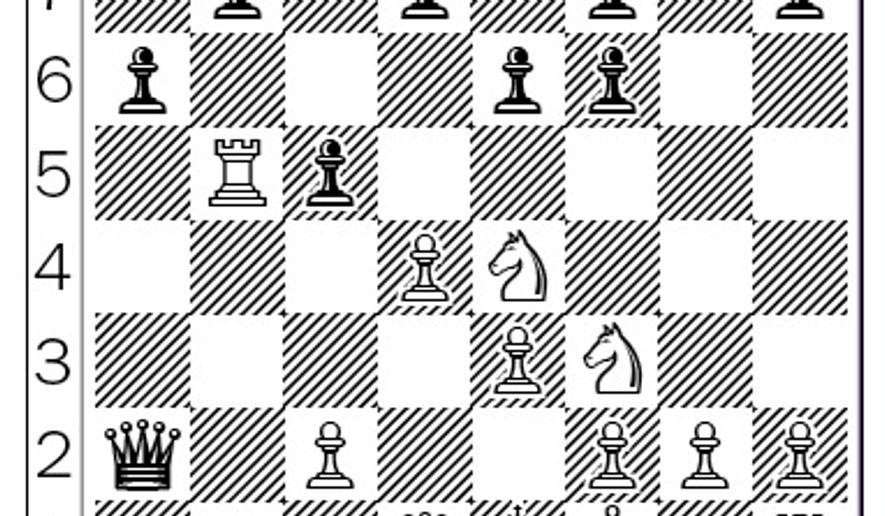Great players don’t always make great teachers.
Babe Ruth couldn’t get hired as a manager. Michael Jordan and Wayne Gretzky were nowhere near as successful building or coaching a team as they were playing on one.
For chess it’s a little murkier. Tarrasch, Nimzovich and Reti were not only world-class players in their day, but among the greatest theoreticians the game has ever known. Both Capablanca (“Chess Fundamentals”) and Fischer (“Bobby Fischer Teaches Chess”) wrote instructional manuals that are still rewarding reads today. Botvinnik, Bronstein and Tal all produced annotated game collections that are among the classics of the genre.
But it is also striking that some of the best and most influential teaching books of modern times were written by good-but-not-great players, from Irving Chernev and Hans Kmoch to IMs such as Jeremy Silman and John Watson. (Silman’s “How to Reassess Your Chess” may be the most recommended book out there for players looking to kick their game up a notch.)
American chess lost another of those prolific IMs this month with the death of Danny Kopec June 12 at the age of 62. The Brooklyn University computer science professor had some notable successes at the board, including a New York high school championship, several top-three finishes at the U.S. Open and the Scottish national championship in 1980 and 1981.
But Kopec’s most lasting legacy will likely be a string of fine instructional books and articles, an annual chess camp and one of the first sets of teaching videos for chess. Today’s game finds Kopec applying some of his own lesson plans to defeat Nick DeFirmian, one of the strongest American grandmasters of his era, in a 1985 game.
In a Torre Attack that bears a strong resemblance to the Sicilian Poisoned Pawn lines, Kopec as White shows himself equal to the dynamic demands of the position on 8. Rb5! Qxa2 9. Bxf6 gxf6 10. Ne4 a6 (see diagram; two pawns up, Black will be fine if he can develop his pieces) 11. Rxc5!! Bxc5 12. dxc5!, leaving the Black king mercilessly exposed.
DeFirmian tries to find relief in flight (15Rf8? loses to 16. Qg5+ f6 17. Qg7+ Rf7 18. Qxf7+ Kd8 19. Qf8+ and mate next), but after 21. Bxb5! Rb8 (cxb5 22. Nb5+ forks king and queen) 22. Bxc6 Rxb3 23. cxb3 Qxb3+ 24. Kd2 Qb2+ 25. Kd3 Kxc6 26. Nc4! Qb3+ 27. Kd4, the White king is safe — and even contributes to the attack — while the Black monarch’s woes remain.
The end comes on 28. Qe7! (threatening 29. Qd6+ Kb7 30. c6+, winning the queen) Kb5 29. Rb1!, and Black resigns as 29Qxb1 30. Na3+ is winning.
—-
The real Olympics — the 42nd World Chess Olympiad — kicks off Sept. 1 in Baku, Azerbaijan, and, on paper at least, the U.S. will be sending perhaps its strongest team ever. The U.S. Chess Federation confirmed late last week that GMs Fabiano Caruana, Hikaru Nakamura and Wesley So — Nos. 3, 6 and 10 in the current FIDE world rankings — will lead the team.
The Americans last medaled in the biennial event in 2008 and last took gold in 1976 — when the then-Soviet Union team was boycotting the event.
Kopec-DeFirmian, 1985
1. d4 Nf6 2. Nf3 e6 3. Bg5 c5 4. e3 Qb6 5. Nbd2 Qxb2 6. Rb1 Qc3 7. Rb3 Qa5 8. Rb5 Qxa2 9. Bxf6 gxf6 10. Ne4 a6 11. Rxc5 Bxc5 12. dxc5 Qa5+ 13. Nfd2 f5 14. Nd6+ Ke7 15. Qh5 Qa1+ 16. Ke2 b5 17. Qxf7+ Kd8 18. Nb3 Qc3 19. Kd1 Nc6 20. Bd3 Kc7 21. Bxb5 Rb8 22. Bxc6 Rxb3 23. cxb3 Qxb3+ 24. Kd2 Qb2+ 25. Kd3 Kxc6 26. Nc4 Qb3+ 27. Kd4 Qb4 28. Qe7 Kb5 29. Rb1 Black resigns.
• David R. Sands can be reached at 202/636-3178 or by email at dsands@washingtontimes.com.
• David R. Sands can be reached at dsands@washingtontimes.com.




Please read our comment policy before commenting.